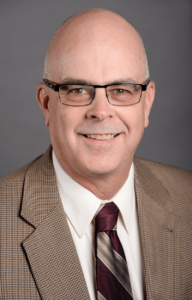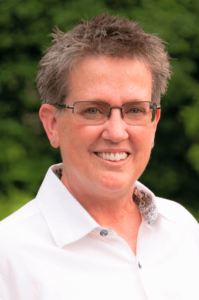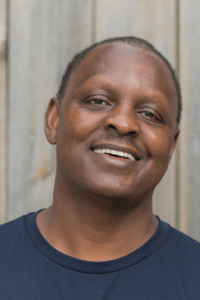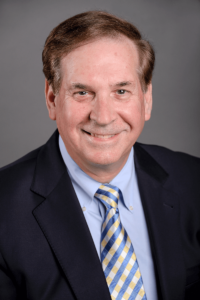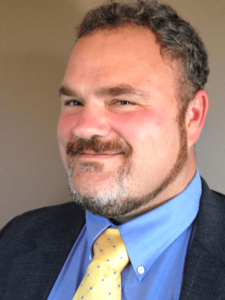The past few years St. Anthony City Council has grappled with the aftermath of the Philando Castile shooting, the fate of the Lowry Grove mobile home park property, and the advance of a plume of a toxic chemical in the drinking water.
Six candidates have come forward in the Council race, some drawn by recent issues, some wanting to stay on the Council in spite of the stresses. We asked the two incumbents and four first-timers to tell us why they’re running, their qualifications for the job, and their priorities and positions.
None of the candidates were given the questions beforehand. To keep things uniform, our follow-up questions asked for clarification, rather than elaboration, of their answers. The report below sticks to very close paraphrase of what the candidates said, or direct quotes. We listed the candidates in reverse alphabetical order by last name.
To learn more, including what leadership means to them, quotes on hot-button issues, and their latest most compelling read, go here.
Another chance to hear what the candidates have to say: The St. Anthony Area Chamber of Commerce is hosting a candidate forum, followed by a meet and greet, on Wednesday October 25 at 6:00 to 7:30 pm, in the Council chambers at the Community Center. That will be followed by a forum and meet and greet with school board candidates from 7:30 to 9:00 pm. We plan to present information on St. Anthony-New Brighton School Board candidates in the October 18 edition.
Randy Stille
Randy Stille, a 28-year St. Anthony resident in his 14th year on the Council, likes the hands-on satisfaction of seeing results of the Council’s work. He feels allegiance to residents who supported him in the past, and to city staff, “awesome people” who “deserve stable leadership.”
One of his priorities: finding a way to complete the Department of Justice’s Collaborative Reform evaluation of the police department, in light of possible funding cuts. “For people who support our police, or for people who don’t support our police, I think we’re all on the same page as a community. We want to see the fruits of our labors realized.”
Also important, the Lowry Grove development. He wants to make sure that there is “a hallmark project at the gateway of our city that we can be proud of.” He said he could not further comment except as the matter comes before the Council.
Stille is proud that City achieved GreenStep 5 designation this year and of the “culture of stewardship and sustainability” within the Council and the city staff. “We’re taking care of our resources and what’s been given to us in the best way possible, and we’re striving to continue to looking for other means to do that, too.”
Another accomplishment he cites: the Council and staff’s quick response in building the advanced oxidation plant when faced with an advancing plume of 1,4-dioxane contaminating the city’s drinking water.
Stille was eager to explain why the Walmart property remains vacant since the store went dark in 2014. Walmart’s lease doesn’t expire until 2025. It’s Stille’s understanding that after three years of vacancy, the landowner, IRC of New York, has the option of finding another tenant and canceling the lease or continuing to take the Walmart payments until the lease runs out. Council’s hands are tied. “All the city can do is guide the zoning.”
Nancy Robinett
Nancy Robinett moved to St. Anthony in 2014 from Washington state and lists a “lifelong history of civic engagement” in other places she’s lived. Her concerns about the city’s response to the Castile shooting, the closing of Lowry Grove, and the management of the police department led her to become a grassroots leader in St. Anthony for the past 14 months, and to run for Council.
One of her highest priorities is getting the police department up to the standards of a 21st-century police department. “We really have some upgrading to do, and it will benefit us tremendously. I do have faith in our police department that we will get better, and we will be a better city for it.”
Zoning issues with respect to the Lowry Grove site, especially surrounding affordable housing, as well as “smaller zoning issues,” are also important. She believes that local government has a duty to provide some sort of housing assistance when affordable housing is lost to development and said that is keeping with wording in the city’s 2008 Comprehensive Plan.
Transportation infrastructure – more biking, more walkability, and continuing to keep the roads in good shape – is also on her agenda. She wants to mobilize Villagers to weigh in about the planned bike lanes at 29th Avenue and County Road C and other projects as they come up.
Robinett’s been hearing a lot about the vacant Walmart. “Citizens are maddened to see some of our commercial spaces … so underutilized in a very booming market. If nothing else, the city needs to be telling people why, at least giving updates on why we can’t seem to do anything with them.”
On working with a Council and mayor of whom she’s been publicly critical: “As a lawyer… I am accustomed to reaching out and building bridges …and disagreeing on an issue and turning around and moving on to the next issue.”
Thomas Randle
Thomas Randle moved to St. Anthony about a year-and-a-half ago; before that he was in New Brighton, with ties to St. Anthony. His wife taught at the Community Center, and his children were in the school district. Randle coaches basketball for the Boosters program.
He’s a member of St. Anthony Villagers for Equity and Community (SAVEC), a group of people of color that focuses on fostering inclusive leadership and engagement in the city. He was drawn to the group because “at times, it doesn’t seem like everyone’s voice is heard.” Wanting to change that led him to run for the Council.
Being part of SAVEC made him look at the community as a whole. That, along with recent events, led him to file for candidacy. “I don’t want to lay everything on the feet of what’s been happening the last year-and-a-half, but that’s been part of it.”
His first priority: “to get people together, for us to try to understand one another.” Confrontation is not his style: “There’s a better route. I don’t feel that things need to get ugly to make a point.”
“I understand that you can’t go forward until you deal with the past, but I also think we can do both, deal with it and move forward, without tearing each other down or ripping apart the community.”
Second, he’s concerned about the lost tax revenue from the vacant stores and commercial property in St. Anthony. “I would hope to see the trail from point A to point B to point C, to see what led those businesses to leave. We have to see if there’s something we could have done to keep them here.”
He said that being a black man married to a white woman, with good relationships with many residents in the predominantly white city gives him a unique perspective. “It’s a great community, it just needs some tweaking, and it needs someone who can see things from both sides.”
Jan Jenson
“I want to serve my community to the best of my ability because I appreciate how life has treated me.” Jan Jenson, a 35-year resident of St. Anthony says he’s committed to service, with 10 years on City Council, four years each on the Planning Commission and the Parks Commission, as well as coordinating Booster baseball.
He’s proud of what the Council and city staff have accomplished, including the construction of the advanced oxidation water treatment plant, the regional storm water facility, of trash pickup, implementation of police body cameras, and being named a GreenStep 5 city by the MPCA and the 2016 Sustainable City of the year by the League of Minnesota Cities.
High priorities: the Department of Justice (DOJ) Collaborative Reform program reviewing the police department, and the city’s participation in the Government Alliance on Race and Equity (GARE). “[They] provide us the framework to look at how we do things, how we act, how we execute our total social infrastructure.”
The GARE program will “ensure that we have very just policies and procedures that are willing to support everybody and not just a select few.”
He said the police department is welcoming the DOJ program. “We need to make sure that we really support that, encourage it, so we can achieve that level of growth for them, which will result in better community appreciation and understanding of what the police do.”
He talked about the community response after the shooting. “Some people wanted some change, immediate change, but it wasn’t 100% clear as to what that should be. If you’re in a leadership role, you want to do things carefully and methodically … It’s easy to point the finger, it’s hard to come up with something that’s really valuable and beneficial, genuinely serving all.”
“This past year has been difficult … we need to continue a strong dialogue that empathizes with one another.”
Dave Colling
Dave Colling has been living in St. Anthony for a year-and-a-half, and before was in Northeast Minneapolis. He has spent most of his professional life working in government and managing political campaigns, but recently started working for nonprofits. He was drawn to run by the events surrounding Lowry Grove, which he said is a very similar community to the Detroit, Michigan, neighborhood where he grew up.
“When I saw that over 100 constituents of our elected officials were losing their housing through no fault of their own, and not one official set foot in that property, I thought something needs to change.” On the day of the Jeronimo Yanez verdict, he decided to seek office.
His top priority: Facilitating more community engagement. “I think that the city has taken an attitude that … if people want to be involved they can come and they can be involved. And I think of the very opposite attitude of that, which says people need to be engaged, they need to be told about what’s happening, and educated about how it affects them. And then give them an opportunity outside of a Council meeting, outside of a committee meeting, to be involved.”
He used Lowry Grove as an example, wishing for less-formal opportunities for residents to meet with the planners to discuss what they would have liked to see in that space.
His second priority is providing opportunities for dialogue. “What’s happened the last three years … there’s a lot of people yelling, nobody listening.”
Third, being proactive in policy. The city should look at what other communities in the Twin Cities and across the country are doing, and bringing those ideas to St. Anthony. “Why can’t we be proactive and do some of those same things? … and not waiting for the next tragedy before we act. That seems to be the way things happen now.”
Christopher Clark
Christopher Clark has lived in St. Anthony a year and before that resided in Northeast and downtown Minneapolis. There, he ran for the city council, school board, and twice for mayor. He decided to put his hat in the ring after learning about the Lowry Grove residents being “deceived and pushed out without being part of the process,” and also because of the community response to the police shooting.
“Everybody is just so anti-cop these days. I actually do support the police, and it was just the one person who gave everybody a bad name. … People see things as black and white, and to me there is a lot more gray to those issues.”
Clark was the only candidate who listed his party affiliation on the voluntary disclosure. As a Libertarian, he said he believes in “less government, more responsibility.”
Transportation and safety is one of his priorities. Up until two years ago, he was solely a bus rider. “In order for people to take the bus to work, you need to know you can catch it more than once an hour.” He also mentioned the need for a set of lights at the intersection of County Road C at Stinson Boulevard.
More community input into development, both with respect to commercial development and green spaces, and more transparency from the city with respect to development are also key items on his agenda. He cited the vacant Walmart as an example, as well as the desire to see a community green space as part of the Lowry Grove development.
He spoke about the tone of discourse in the country and community in recent months. “People can communicate without screaming and hollering … Even though we don’t always see eye to eye, we can learn from each other. That’s what’s it’s all about: learning, understanding what the other person is talking about.”
Below: Randy Stille, Nancy Robinett, Thomas Randle, Jan Jenson, Dave Colling, Christopher Clark. (Photos were submitted)
